In the lush landscapes of Southeast Asia, a charming and colorful bird known as the Java Sparrow (Lonchura oryzivora) graces the skies. With its distinctive appearance, captivating behavior, and cultural significance, the Java Sparrow has captured the hearts of bird enthusiasts, aviculturalists, and nature lovers around the world. In this article, we delve into the world of the Java Sparrow, exploring its appearance, habitat, behaviors, and the special place it holds in the avian realm.
Java Sparrow images
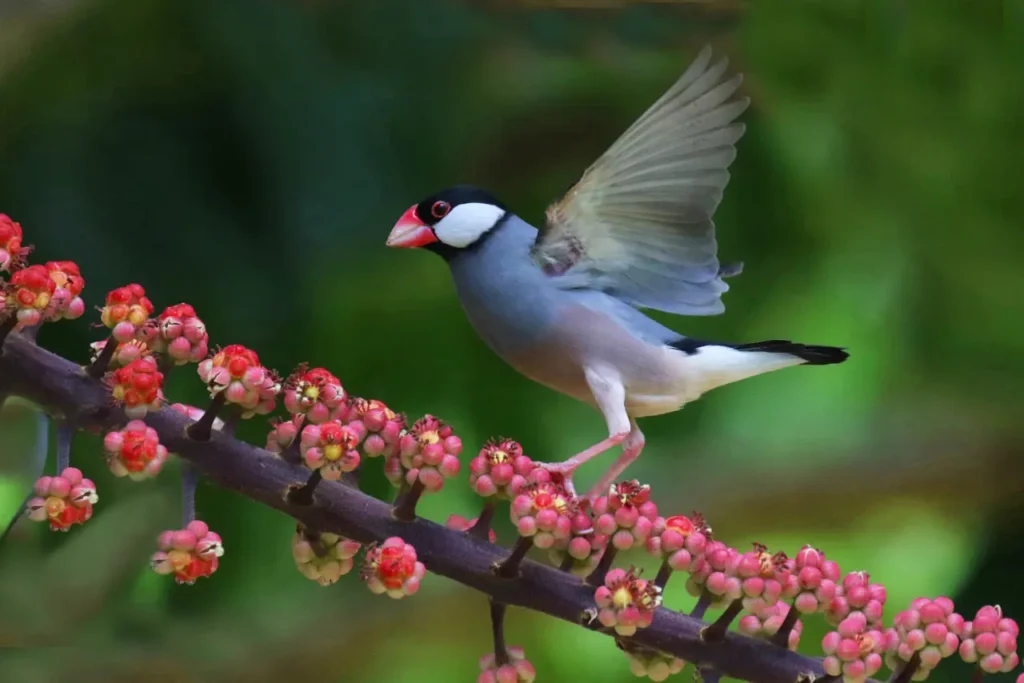
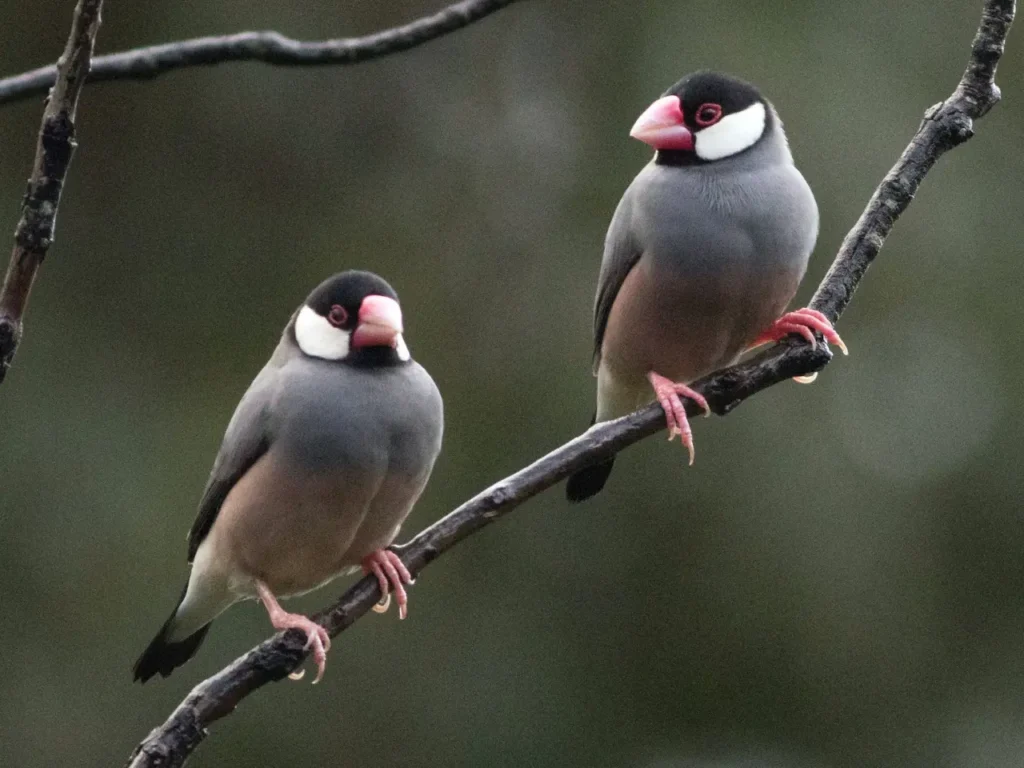
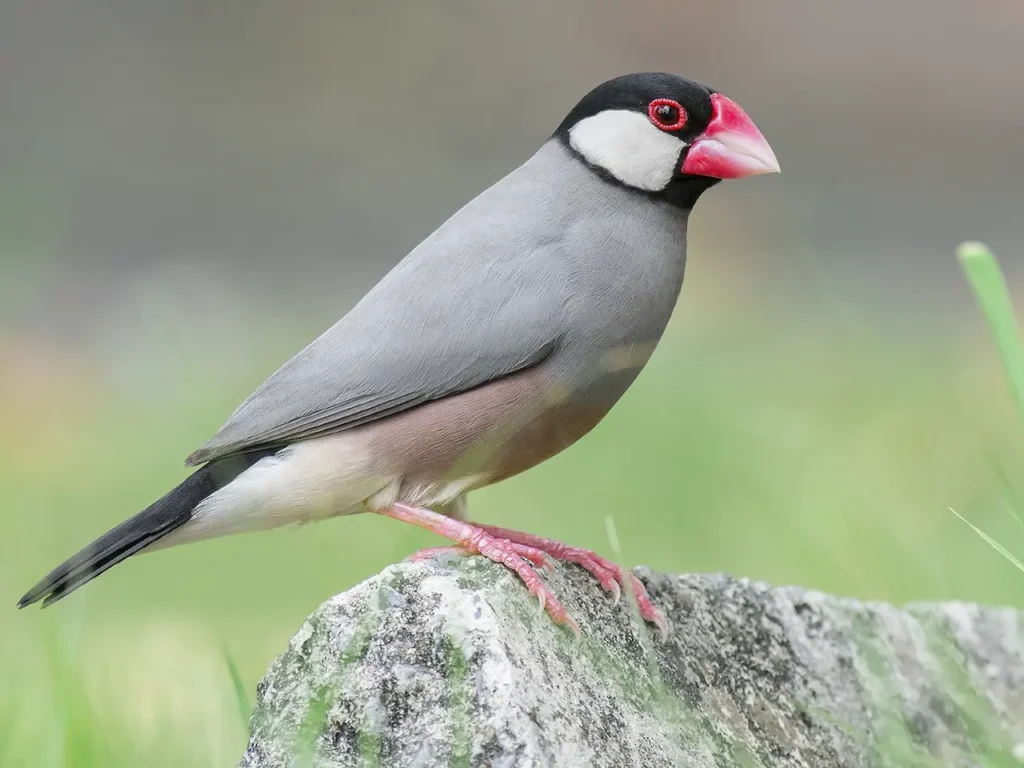
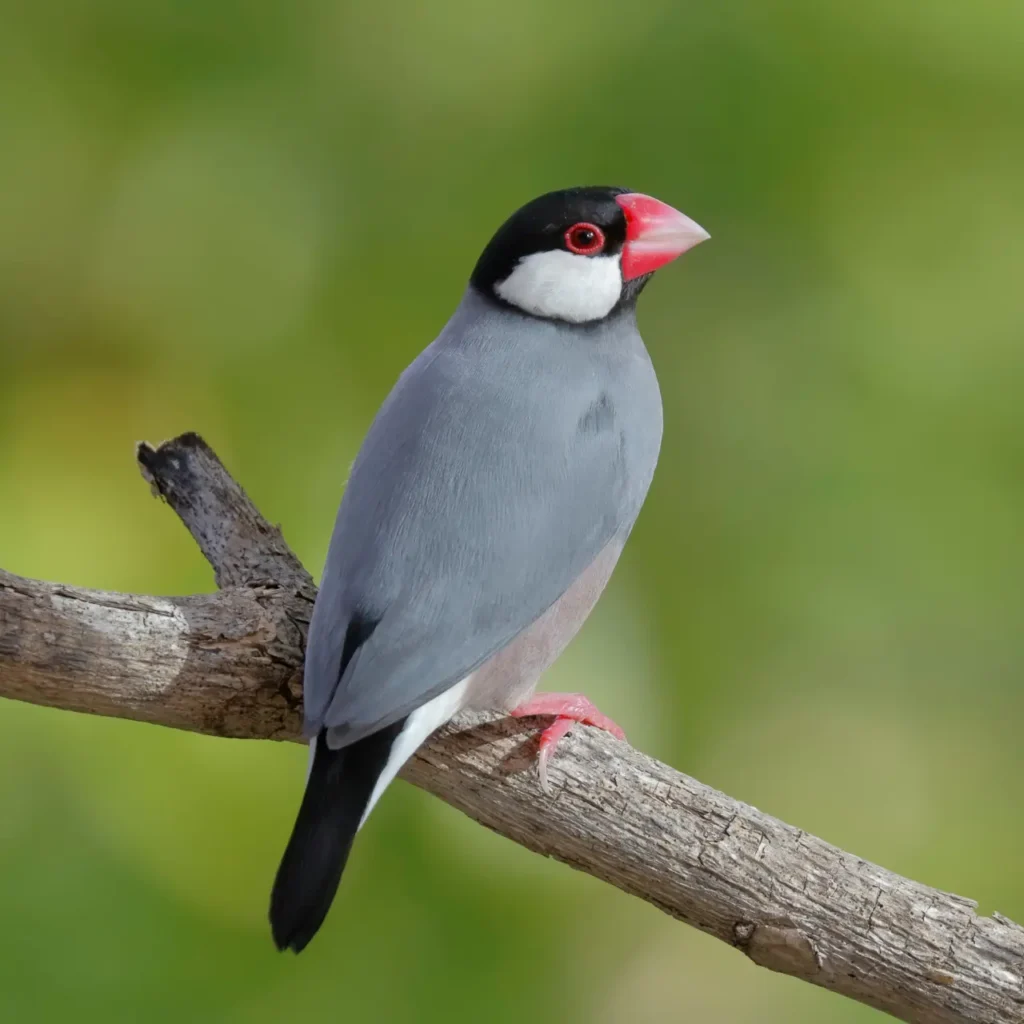
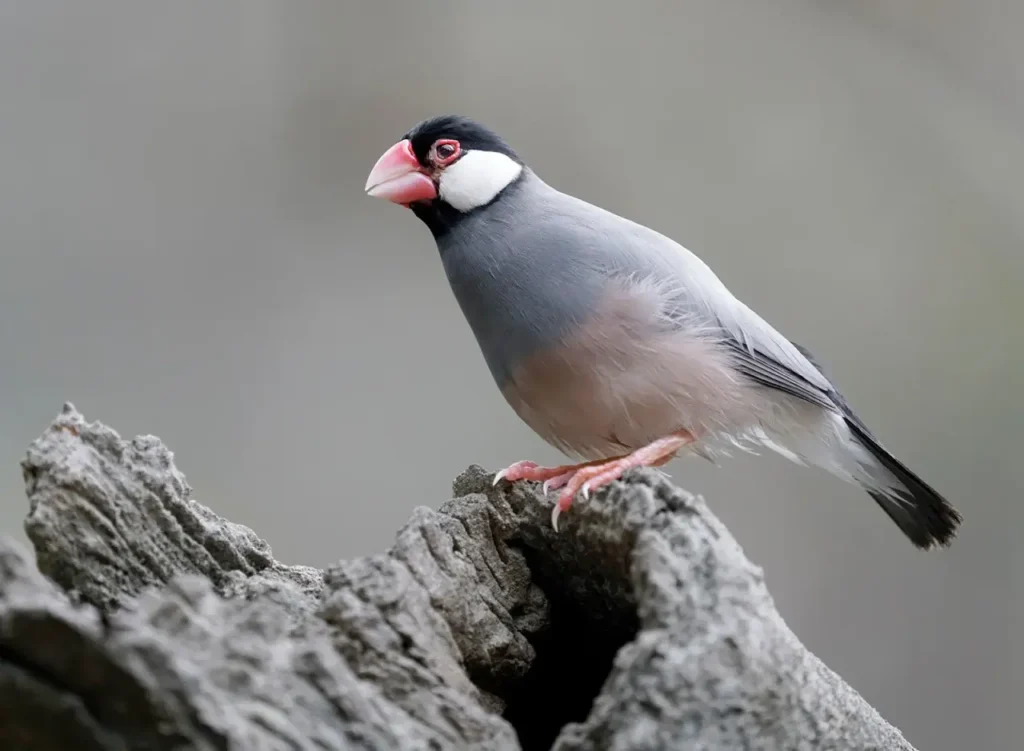
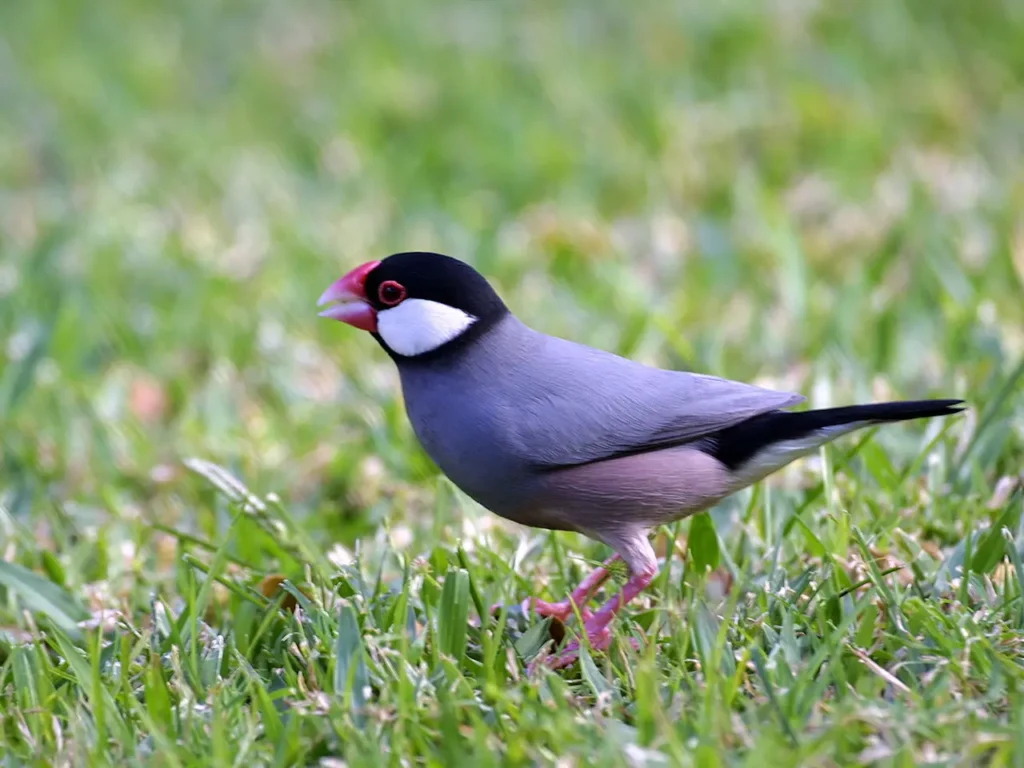
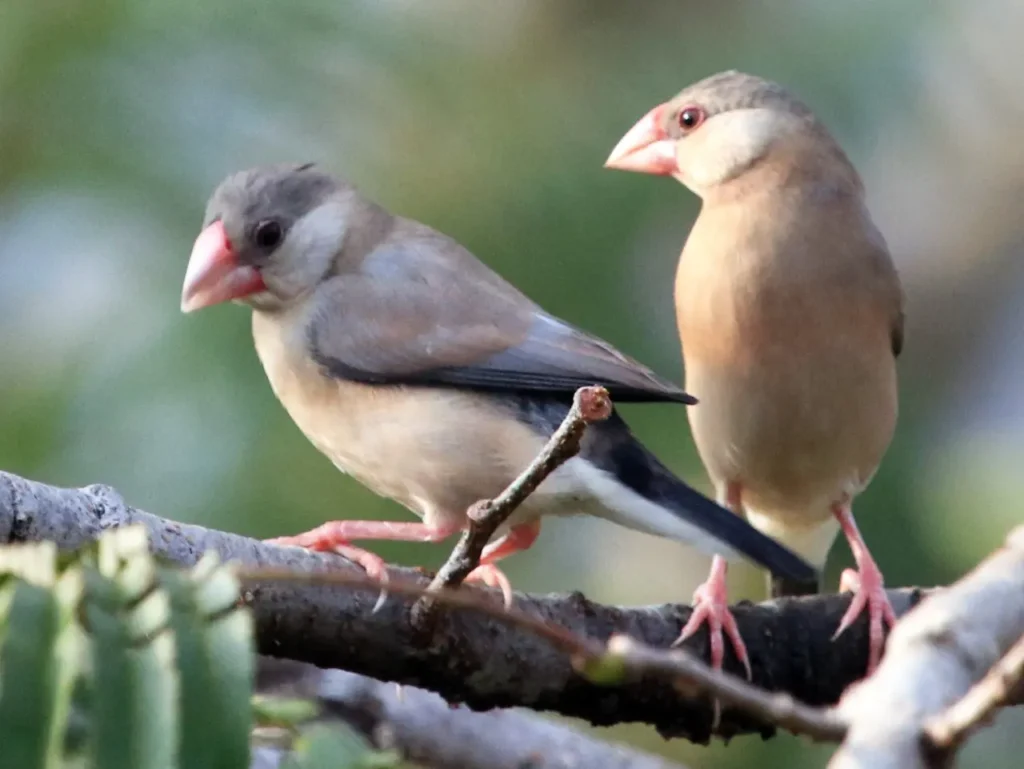
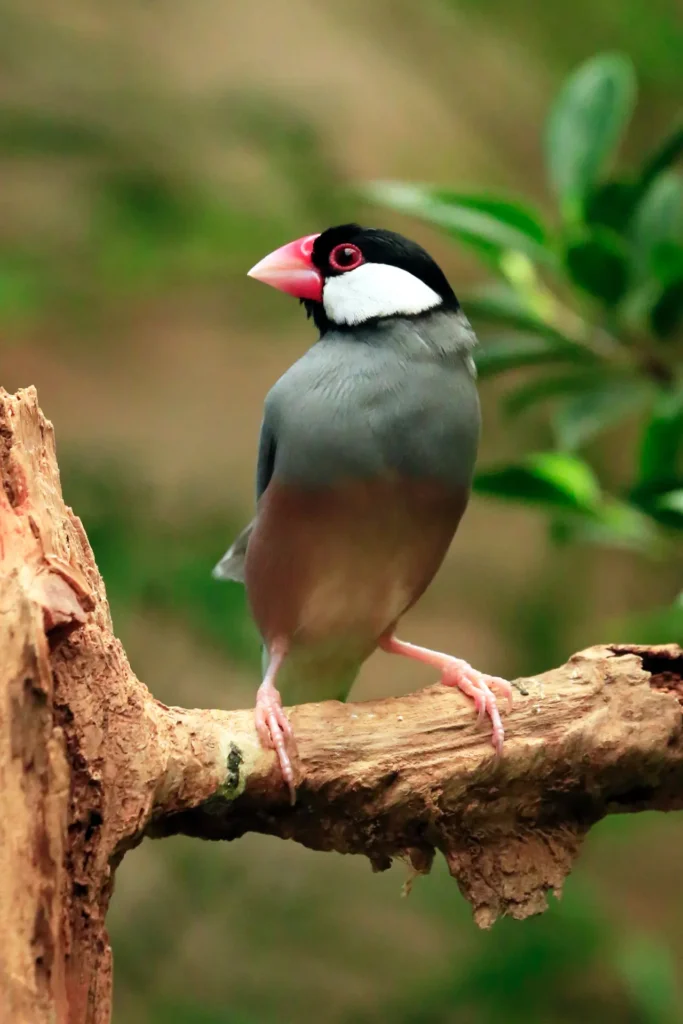
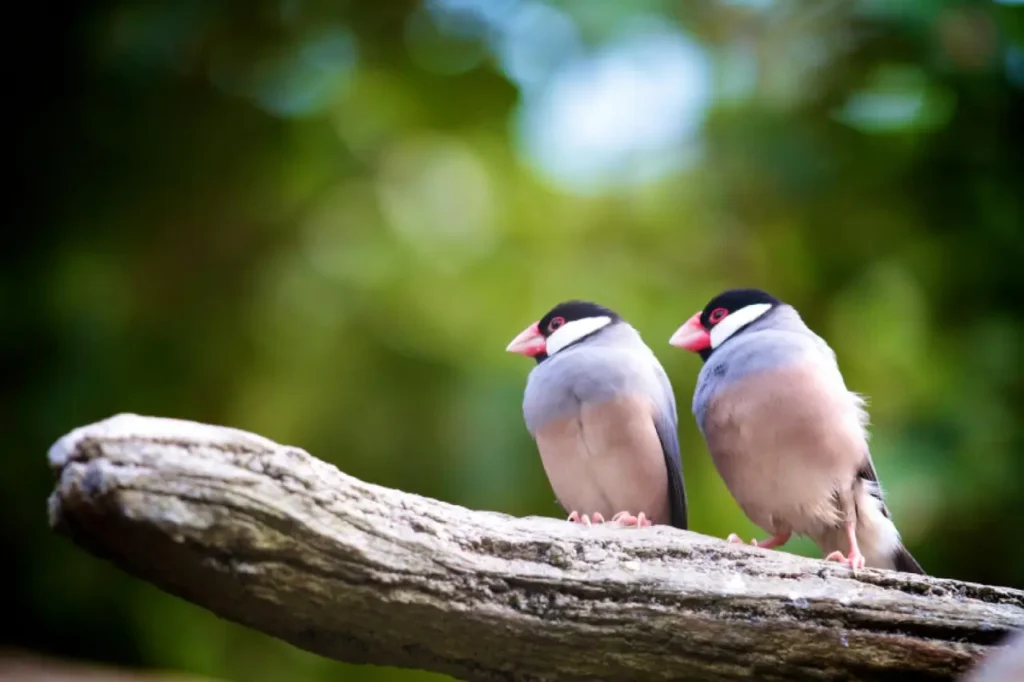
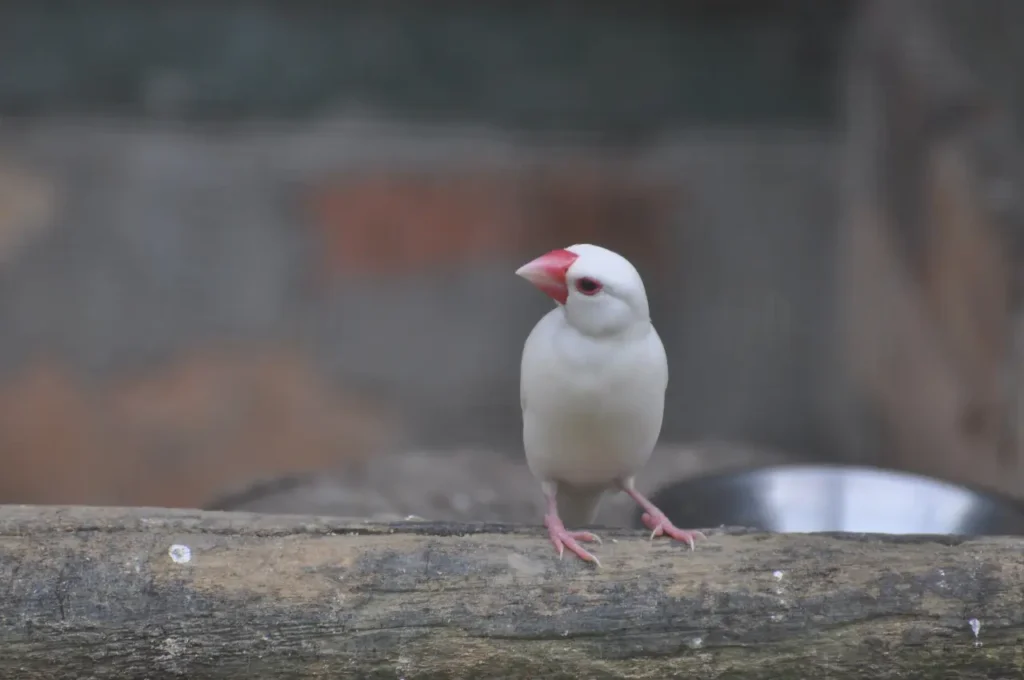
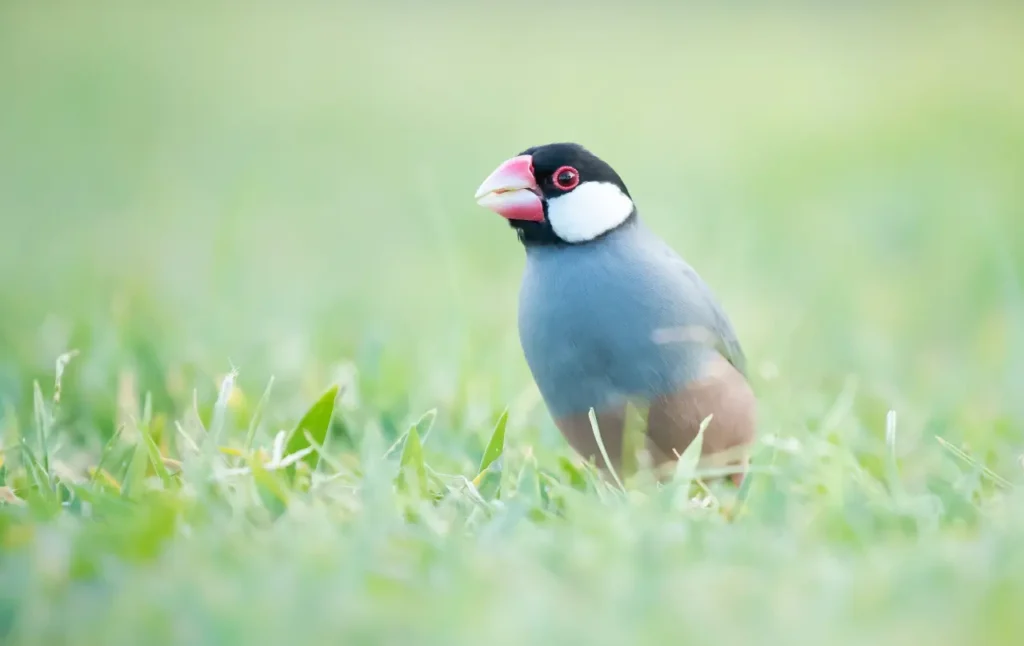
Appearance and Characteristics
The Java Sparrow is a small bird characterized by its unique combination of colors and patterns. Its plumage features a striking contrast between its deep black head and upper body and the pristine white or grayish underparts. Additionally, a patch of pink or reddish skin encircles its eyes, adding a touch of vibrant color to its visage.
One of the most captivating features of the Java Sparrow is its charming beak, which is conical in shape and designed for cracking open seeds. This beak adaptation reflects its primary diet and highlights its role as a granivore, primarily consuming various seeds.
Habitat and Range
Native to Southeast Asia, the Java Sparrow can be found in a range of habitats, from grasslands and cultivated areas to rice paddies and urban environments. Its range includes countries such as Indonesia, Malaysia, Thailand, and the Philippines. It is also known to inhabit open woodlands, gardens, and areas with a consistent food source.
Behaviors and Social Structure
The Java Sparrow is a highly social bird that tends to gather in small to large flocks. Its gregarious nature and tendency to congregate in groups make it a delightful sight to behold, particularly when observed feeding or interacting with fellow sparrows.
These birds are known for their melodious songs, and while their calls may not be as complex as those of some songbirds, they bring an enchanting harmony to their environments. The songs and calls of Java Sparrows often contribute to the auditory tapestry of their habitats.
Avicultural Interest and Conservation
The Java Sparrow’s captivating appearance and sociable demeanor have led to its popularity as a pet and aviary bird. It is often kept by aviculturalists who appreciate its charming personality and ability to adapt to various captive conditions. However, it’s important to ensure that captive-bred birds are sourced ethically and responsibly to support conservation efforts for wild populations.
In terms of conservation, the Java Sparrow is classified as a species of least concern on the IUCN Red List. However, habitat loss and trapping for the pet trade remain potential threats to its populations. Conservation efforts, including habitat preservation and responsible aviculture practices, are essential to ensure the continued survival of this delightful species.
The Java Sparrow, with its captivating colors, cheerful demeanor, and charming songs, exemplifies the beauty and diversity of avian life in Southeast Asia. Its presence brings joy to those who appreciate its natural elegance and contributes to the vibrant ecosystems it inhabits. By fostering an understanding of the Java Sparrow’s significance and celebrating its role in the avian world, we honor the intricate connections that weave through the tapestry of life on our planet.








